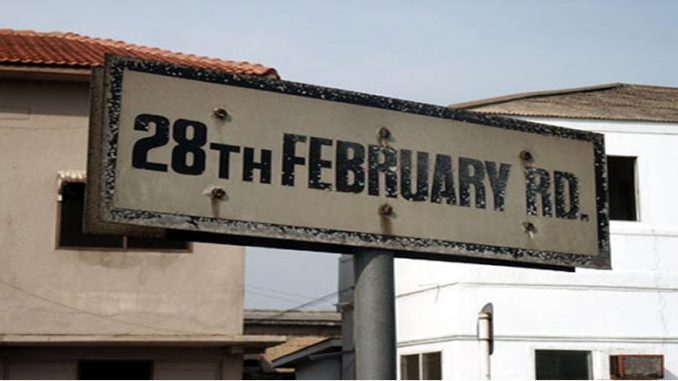- by arkoh
- March 4, 2024
Click the link below to join Our WhatsApp group for daily brief on current trends in the country.
Join Here!
Loading

The 1948 riots in the Gold Coast, now known as Ghana, were triggered by the tragic killing of three veteran soldiers – Sergeant Cornelius Francis Adjetey, Corporal Patrick Attipoe, and Private Odartey Lamptey, on Saturday, February 28th, 1948. However, beneath this immediate cause lay a series of underlying grievances and events that fueled the unrest.
In January 1948, Ga chief Nii Kwabena Bonne III spearheaded a boycott of European imports, protesting inflated prices imposed by foreign traders. This boycott, aimed at the Association of West African Merchants (AWAM), led to riots in early February 1948.
On the planned conclusion date of the boycott, February 28th, World War II veterans marched peacefully to Christiansborg Castle, Accra, demanding promised end-of-war benefits and pay. Their peaceful demonstration turned tragic when colonial police opened fire on them, killing the three aforementioned soldiers.
Angered by this violence and enduring injustices, the people of Accra and beyond took to the streets, targeting European and Asian businesses and properties. The United Gold Coast Convention (UGCC), a political organization advocating an end to colonialism, urgently cabled the Secretary of State for the Colonies, expressing their belief that a change in government was imperative to quell the unrest.
On 1st March, a state of emergency was declared, and a new Riot Act was enacted. On March 12th, the colonial governor ordered the arrest of “The Big Six,” leading UGCC members, including Kwame Nkrumah, whom he believed were responsible for the disturbances. These leaders were incarcerated, igniting disagreements within the UGCC.
By 1949, Dr Nkrumah had parted ways with the UGCC to form the Convention People’s Party (CPP), rallying the masses through a campaign of “Positive Action.” This movement ultimately led to the end of colonial rule in Ghana, heralding its independence on March 6th, 1957.
Thus, the 1948 riots served as a pivotal moment in Ghana’s journey towards liberation, marked by the sacrifices of its people and the emergence of new political forces shaping the nation’s destiny.
Credit: PRAAD

Click the link below to join Our WhatsApp group for daily brief on current trends in the country.
Join Here!
0 Comments: